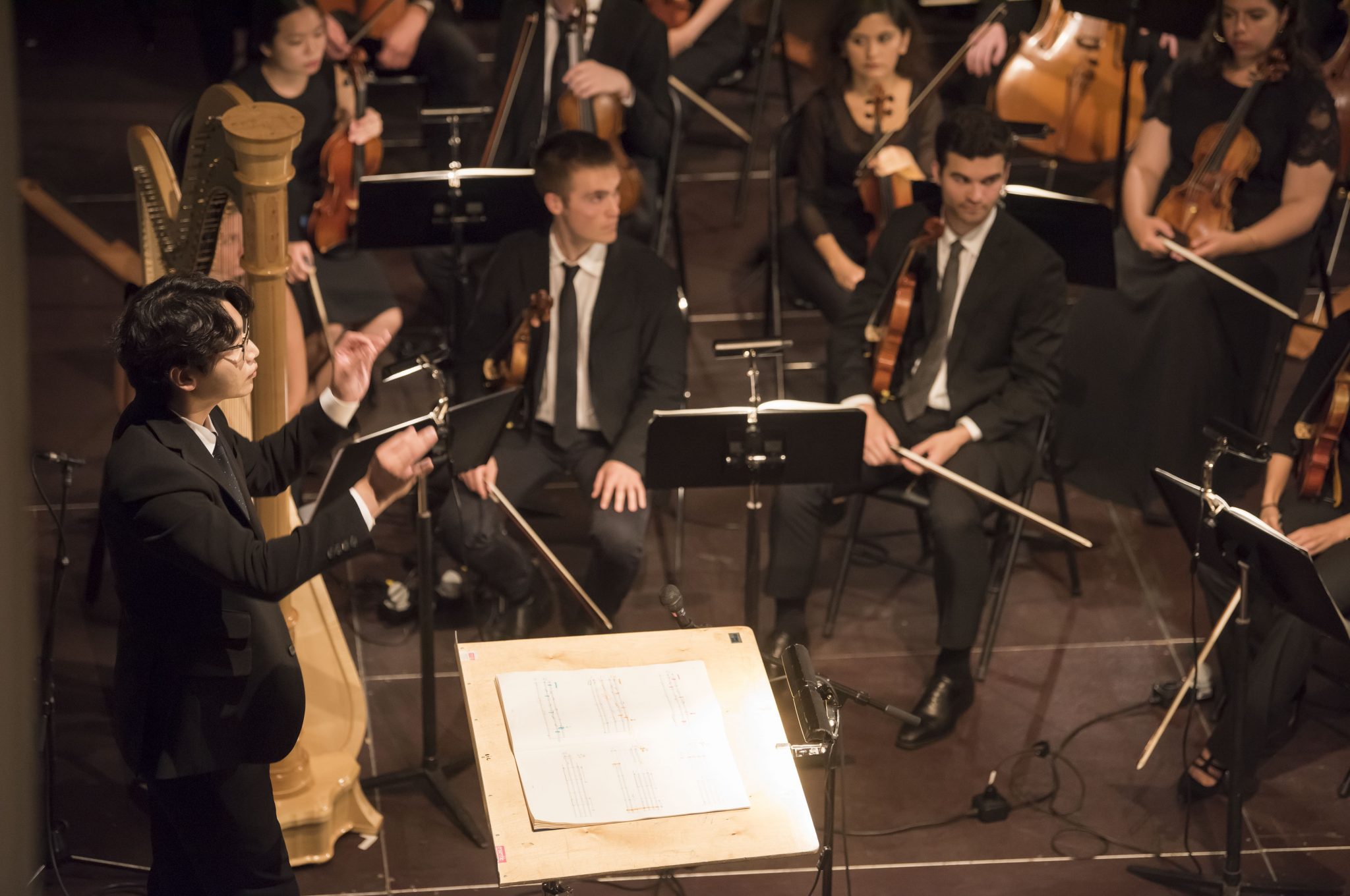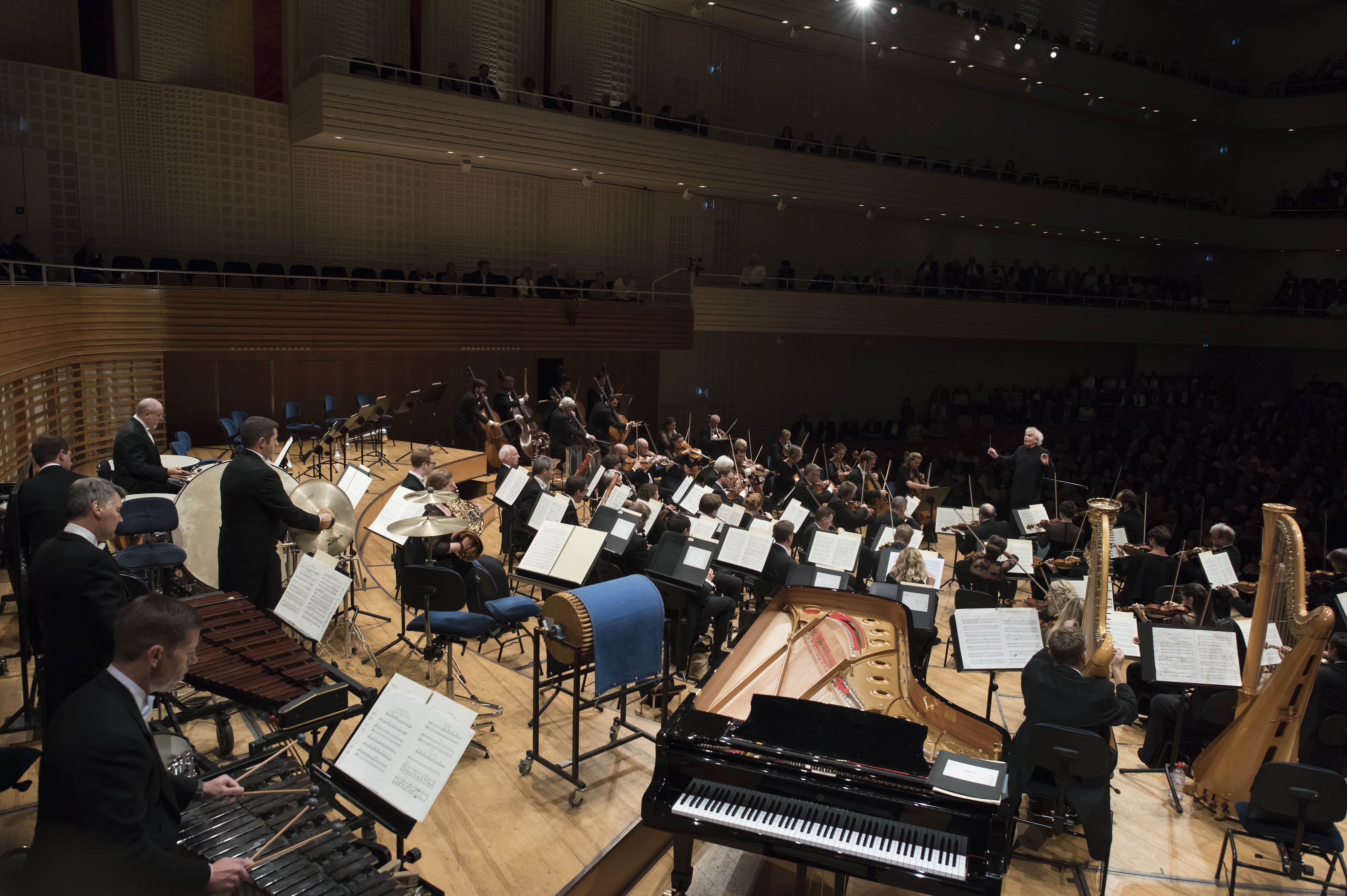FRENCH MASTERPIECES FROM THE LONDON SYMPHONY

It was now the turn for three evenings with the London Symphony Orchestra under the baton of Sir Simon Rattle their new Music Director. I attended the first two of these evenings – Messiaen on the 9th and Ravel on the 10th. The first concert was shared with the Lucerne Festival Academy of the Italian composer Luigi Nono in a haunting homage to the Russian film director Andrei Tarkovsky. This was his very last orchestral work in which the musicians into seven groups spread across the entire concert hall as the sound go back and forth and even gives space to silence. There were seven such groups the main one on stage and another large group at the back of the stalls and two groups on either side of the galleries.
In the mid 1980s Nono visited a monastery near Toledo in Spain, and on a wall there saw the inscription, “Caminantes, no hay caminos. Hay que caminar” (Walker, there is no path, yet you must walk).

Replacing Matthias Pintscher was the extraordinarily gifted Korean conductor and composer Jaehyuck Choi. Apart from the occasional explosion of sound Nono’s music is delicate, almost immaterial, verging on the edge of inaudibility. Written in 1987 it is clearly avant garde and not by any means easy to listen to.
The Messiaen on the other hand is more tonal weighty, almost physically tangible, loud to the point of nearly causing pain. The work Et expect resurrectionem mortuorum (And I await the resurrection of the dead) is scored for woodwind, brass and percussion. There are no strings at all and the thirty-five minutes long piece is in five sections.

The second concert of the LSO featured works by French impressionist Maurice Ravel. This composer felt most at ease in the company of children. He loved to crouch down and play with them, tell them stories or track down mechanical puppets at fair stalls to give them. In his creative work several scores have a reference to children. In three delicate orchestral songs for example he lets the narrator Scheherazade lead us into the fantastic world of the East. Mezzo-soprano Magdalena Kožená, the wife of Simon Rattle, produces a delicate and warm sound ideal for this repertoire. This song cycle evokes fairy-tale enchantment of an exotic variety. It is a lushly orchestrated symphonic poem with singing, fusing Ravel’s influences from the turn of the century: the art of the Symbolists, French Wagnerism and Debussy’s opera Pelleas et Melisande. In the first song to verse by Tristan Klingsor Asie her voice soared above the hushed orchestral tones. In the second song La flute enchantee there was a wonderful balance within the orchestra allowing prominence to the solo flute.
In Klingsor’s verses the heroine and narrator from The Arabian Nights expresses the fantasies of secret longings desires and fears. In Asie an imaginary journey on a dream ship takes the hallucinating stranger to distant lands seas and island worlds. Eroticism and violence become one at the climax. This is followed by the gentle song of a harem slave who watches over her sleeping master while listening to her lover playing yearningly on the flute. The third and final song depicts the “indifferent” poet intoxicated with languid desires by the appearance of an androgynous youth. Ravel is said to have hinted once that this song conceals the key to his own personality.

The concert opened with the ballet inspired by stories by Charles Perrault “Mother Goose”. This was first composed for piano four-hands and later orchestrated.
The concert closed with a short opera (Ravel called it a Fantaisie lyrique) L’Enfant et les Sortileges (The Child and the Magic Spells). In its blend of artistic perfection and child like longing this may be Ravel’s most characteristic work. Like Ravel the author of its libretto Colette frequently turned to the world of animals and childhood.
In this concert performance Magdalena Kožená played the stubborn, naughty boy who doesn’t like doing his home work. She was joined by a largely English cast with Patricia Bardon as the Mother. As a punishment she makes him stay in his room.
Throwing a tantrum the child destroys objects surrounding him, torments the cat etc. Suddenly these objects take on a life of their own and start behaving like humans. And so begins the nightmare that terrifies the child to his core. Again, Ravel may have portrayed himself in the lead role.





